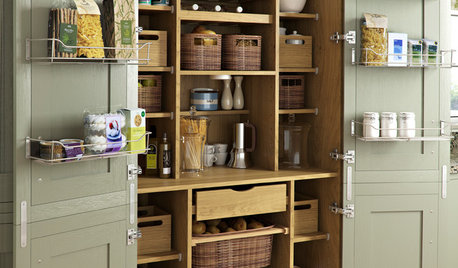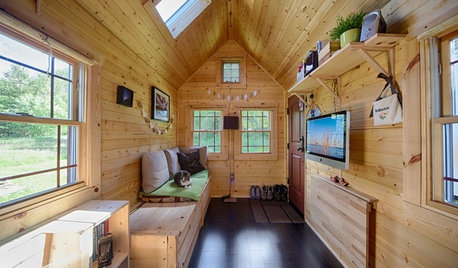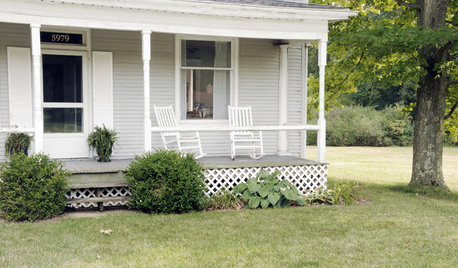75 - 80% Manure Content
bsntech
15 years ago
Related Stories

KITCHEN PANTRIES80 Pretty and Practical Kitchen Pantries
This collection of kitchen pantries covers a wide range of sizes, styles and budgets
Full Story
LIGHTINGThe Lowdown on High-Efficiency LED Lighting
Learn about LED tapes, ropes, pucks and more to create a flexible and energy-efficient lighting design that looks great
Full Story
SMALL HOMESHouzz Tour: Sustainable, Comfy Living in 196 Square Feet
Solar panels, ship-inspired features and minimal possessions make this tiny Washington home kind to the earth and cozy for the owners
Full Story
LIFE9 Ways to Appreciate Your House Just as It Is
Look on the bright side — or that soothingly dark corner — to feel genuine gratitude for all the comforts of your home
Full Story
GREEN BUILDINGOff the Grid: Ready to Pull the Plug on City Power?
What to consider if you want to stop relying on public utilities — or just have a more energy-efficient home
Full Story
FUN HOUZZHow to Throw a Party Like You’re Prince
Get a royal groove on at home by following in the footsteps of The Purple One
Full Story
FRONT YARD IDEAS10 Ideas for a Front-Yard Edible Garden Your Neighbors Will Love
Choosing attractive, well-mannered plants and sharing the bounty will go a long way toward keeping the peace
Full Story
DECORATING GUIDESBulletproof Decorating: Upholstery That Stands Up to Anything
Kids and pets are no match for fabrics as durable as these, which meet higher style standards than ever
Full Story
FALL GARDENING7 Reasons Not to Clean Up Your Fall Garden
Before you pluck and rake, consider wildlife, the health of your plants and your own right to relax
Full Story
DECORATING GUIDES11 Tricks to Make a Ceiling Look Higher
More visual height is no stretch when you pick the right furniture, paint and lighting
Full Story





sinfonian
bsntechOriginal Author
Related Professionals
Ballenger Creek Landscape Architects & Landscape Designers · Essex Landscape Architects & Landscape Designers · Garden City Landscape Architects & Landscape Designers · Prairie Ridge Landscape Architects & Landscape Designers · Brooklyn Center Landscape Architects & Landscape Designers · Harrisburg Landscape Contractors · Lexington Landscape Contractors · North Haven Landscape Contractors · Sammamish Landscape Contractors · West Chester Landscape Contractors · Carlsbad Fence Contractors · Pacifica Fence Contractors · Park Ridge Fence Contractors · Sandy Fence Contractors · Lomita Fence Contractorsjleiwig
sinfonian
bsntechOriginal Author
jbest123
sinfonian
bsntechOriginal Author
greenbean08_gw
Dan _Staley (5b Sunset 2B AHS 7)
bsntechOriginal Author
jleiwig
garycinchicago
bsntechOriginal Author
carolynp
jbest123
bsntechOriginal Author
knittlin
knittlin
greenbean08_gw
garycinchicago
joytosew
bsntechOriginal Author
cherylco
garycinchicago
bsntechOriginal Author
bsntechOriginal Author
garycinchicago
bsntechOriginal Author
listenstohorses
bsntechOriginal Author
sinfonian
garycinchicago